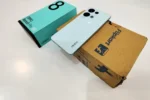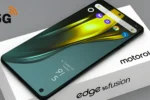Lincoln Wheat Penny : In the world of coin collecting, few stories are as tantalizing as the one that claims a simple Lincoln Wheat Penny (a one-cent U.S. coin minted between 1909 and 1958) is currently worth $950,000 — and that it might even still be hiding in someone’s pocket or change jar. Such claims make for sensational headlines, but what does numismatic (coin-collecting) scholarship actually say?
Background: What Is a Lincoln Wheat Penny?
The Lincoln Wheat Penny, also called the Lincoln Wheat Cent, was introduced in 1909 in honor of President Abraham Lincoln’s 100th birthday. Its obverse (front) shows Lincoln’s portrait, and the reverse (back) shows two stylized wheat ears, giving it the name “wheat penny.” Over its lifespan, it was struck at multiple U.S. mints (Philadelphia, Denver, San Francisco) and in various versions.
While many Wheat Pennies today are worth just a few cents in circulated condition, certain “key date” issues or error coins can command very high premiums among collectors.
Why Some Pennies Become Valuable
A coin’s value above its face value depends on three main factors:
Rarity — how few examples exist of that specific variety or error
Condition (Grade) — how well preserved it is (sharp detail, minimal wear)
Unique features / errors / provenance — misstrikes, unusual composition, verified history
So, for a Wheat Penny to be worth nearly a million dollars, it would need to check all three boxes: extremely rare, pristine condition, and some distinguishing characteristic that stamps it as special.
Known High-Value Wheat Penny Sales
While I could not locate a confirmed sale of a Wheat Penny exactly at $950,000, there are notable high-dollar coins:
One of the most famous is the 1943 bronze (or copper) Lincoln cent, an error coin minted during WWII when pennies were supposed to be made of zinc-coated steel. That error variety has fetched prices in the hundreds of thousands in top condition.The 1958 Double Die Obverse Wheat Penny has been cited in auction records around $336,000 for exceptional examples.
Key date variants like 1909-S VDB are well known and highly collectible
Some reference sources suggest that a 1943 “bronze” version could reach up to $800,000 or even over a million in theoretically perfect conditions.
Thus, while $950,000 is not a commonly confirmed benchmark, it lies within the realm of claimed valuations for ultra-rare error coins — though those claims often lack transparent verification.
Is It Plausible That One Is Still Circulating?
The idea that a rarity of this magnitude is still circulating is romantic — but highly unlikely in practice. Here’s why:
Most high-value coins have long since entered the hands of collectors or institutions.
Many coins change hands or are detected and removed from circulation when they appear “off” (odd weight, odd appearance).
Even among coin collectors, verifying authenticity often requires professional grading (PCGS, NGC) — so any coin believed to be that valuable would typically already be submitted for certification.
That said, coins with less dramatic rarity sometimes do slip through — for example, lesser-known error coins or varieties have been found in pocket change. But a $950,000 variant? The odds are exceedingly small.
What To Do If You Think You Hold Something Special
If you happen to suspect a coin you own is one of these rarities, you can follow these steps:
Don’t clean it — cleaning often damages surfaces and reduces value dramatically.
Inspect under magnification — look for signs of doubling, missing mint marks, or anomalous metal color.
Weigh the coin / check magnetism — some errors are detectable because the composition is different (for example, a 1943 bronze penny would not react like steel).
Compare with reference images from qualified numismatic catalogs.
Submit to a reputable grading/ authentication service (such as PCGS or NGC).
Consult a trustworthy coin dealer or numismatic society before attempting to sell or display it.
Selection of Rare or High-Value Lincoln Wheat Pennies
| Year / Variety | Why It’s Valuable or Rare | Known or Reported Price Range* | Notes / Caveats |
|---|---|---|---|
| 1909-S VDB | Low mintage, early removal of designer initials | Tens of thousands in top condition | Many counterfeits exist. Wikipedia+2bullionexchanges.com+2 |
| 1914-D | Low mintage Denver issue | Up to $100,000+ | Condition is critical. bullionexchanges.com+1 |
| 1922 “No D” | Mint mark error (“D” missing) | Tens of thousands or more in high grade | Many subspecies and degrees of rarity. bullionexchanges.com+1 |
| 1943 Bronze (error) | Made in bronze when pennies should be steel | Hundreds of thousands to possibly low millions | Extremely rare; strong verification needed. bullionexchanges.com+2coincollecting.com+2 |
| 1958 Double Die Obverse | Die doubling error in last year of series | Up to $336,000 (reported) | One of the best documented high-value examples. coincollecting.com+1 |
* Prices are approximate and depend heavily on condition, provenance, and verification by expert grading.
1. Is there any confirmed coin that sold for $950,000?
I did not find a publicly documented and verifiable Lincoln Wheat Penny sale exactly at $950,000. Some error types are claimed or rumoured to reach into the high six or low seven figures, but many of those claims are speculative or lack full transparency.
2. Why do so many sites say “still in circulation”?
Because it is an attention-grabbing narrative. The possibility of someone discovering a “treasure coin” in change is alluring to the public. That said, sensational claims often omit the careful numismatic vetting needed.
3. What is the most valuable Lincoln Wheat Penny known?
Many consider the 1943 bronze (error) penny among the top contenders. Also, top specimens of the 1958 Double Die Obverse have sold for several hundred thousand dollars.
4. If a coin is valuable, won’t people spot it and remove it?
Yes — once a coin is noticeably odd (by color, weight, feel), it tends to be taken out of circulation. That reduces the chance that extremely rare variants remain unnoticed for long.
5. How can someone confirm if their penny is rare?
Use high-resolution images, magnification, and comparisons against trusted reference sources. Then submit the coin to a certified grading and authentication service. Only professionals can reliably confirm the coin’s legitimacy and grade.





